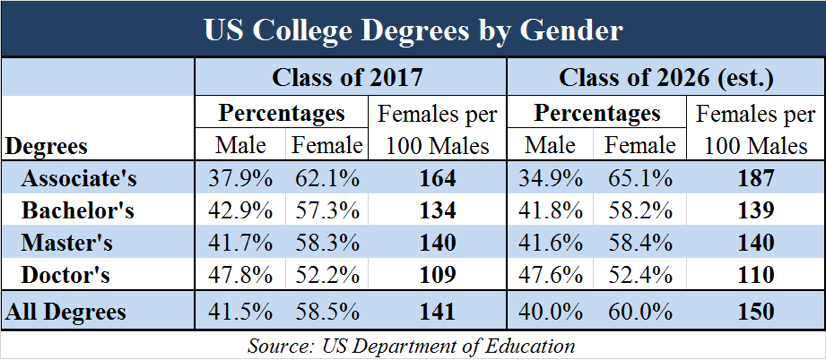Ecosystem Factsheet
NEW Digital Ecosystem Factsheet
NEW Digital Alliance’s goal is to attract, develop & retain diverse IT talent in Northeastern Wisconsin to support economic growth so that by 2021, Northeast Wisconsin employers will have the IT talent to meet or exceed their expectations. In order to track the impact and progress of the numerous activities in the region, we launched a series of surveys in 2018.
The NEW Digital Alliance’s 2nd Annual IT Factsheet for Northeast Wisconsin shows the state of IT education in our regional school districts and colleges. The data shared in this report suggests a general increase in the participation rates within IT-related programs across the region. Data is collected on an annual basis in April from K12 districts, and in June from regional colleges. All surveys are administered by the NEW Digital Alliance.
High School:
In the first year of the survey, we only looked at whether a district offered computer science classes at the high school level, and how many students at the high school participated in the program. This has since been expanded to also look at district size, free and reduced lunch percentages, what specific IT-related courses are offered, male/female enrollment breakdown in those courses, and how many teachers are computer science certified by the Department of Public Instruction.
- In 2017-18, a pilot study was sent to 17 districts in Brown and Outagamie County with 65% responding.
- In 2018-19, additional questions were added to the survey which was expanded to all 94 public districts in Northeast Wisconsin, with 49% responding.
College:
We have collected enrollment and graduation data from seven higher education institutions in the region starting with the 2015-16 school year. The data has become increasingly complete over time. The data includes data by program/major broken down by gender. Preliminary data is collected in June, while final data for the previous school year is compiled and updated in October.
- In 2017-18 the first set of data was collected, including enrollment data for the two prior academic years.
- In 2018-19, additional questions were added to gather graduation data, placement rates, and gender data within each program. As colleges increasingly provide this information, it will be added to the report.
Key challenges
- Demand for IT skills continues to increase, with the digital skills needed on teams outside of the IT department as well.
- The large gender gap continues to impede our ability to fill open roles in regional IT departments.
Key Successes
- More high schools are partnering with TEALS to offer Computer Science classes.
- School districts are participating in the regional NEW CS Advisory board, and starting local CS Advisory boards to help them restructure their traditional CS programs to better align with the variety of careers in IT and employer needs.
- Enrollment in regional college IT programs has increased by 45% since 2015-16.
High School Data
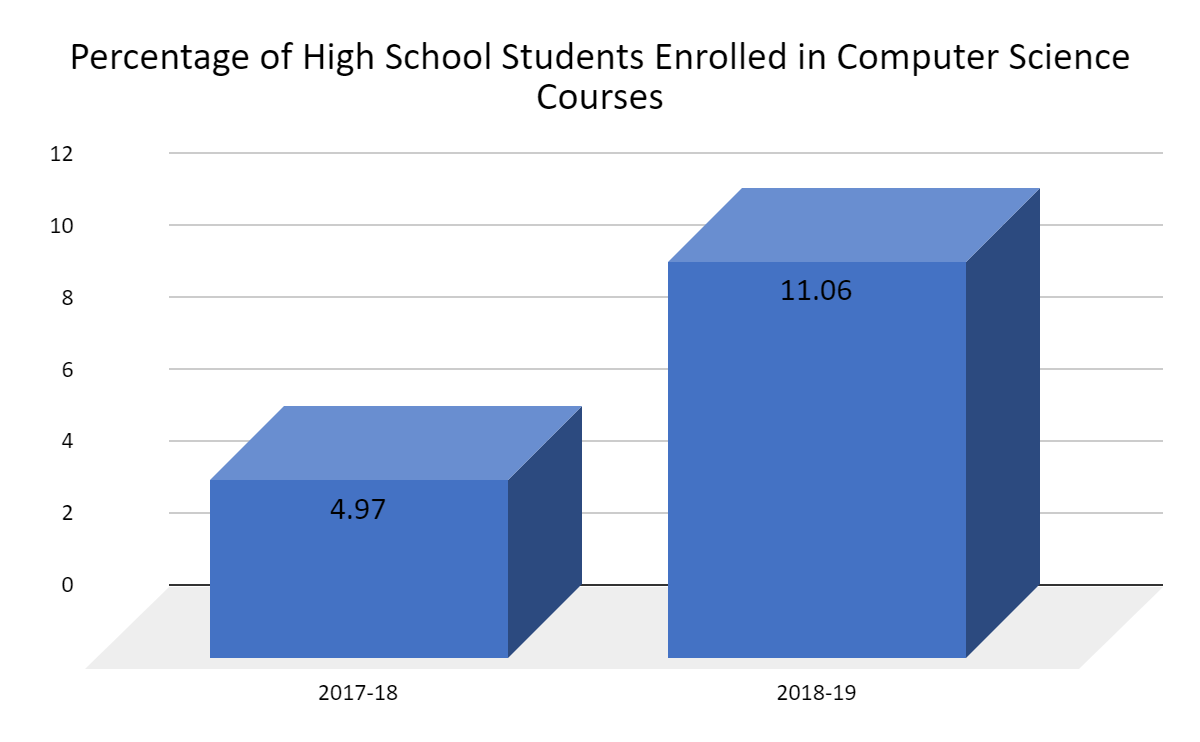
In the 2017-2018 academic year, out of the 11 schools that responded, only about 5% of the student population was enrolled in a Computer Science class at their high school. This changed drastically in one year, as 51 schools reported that roughly a quarter of their students were enrolled in a Computer Science course in the 2018-19 school year.
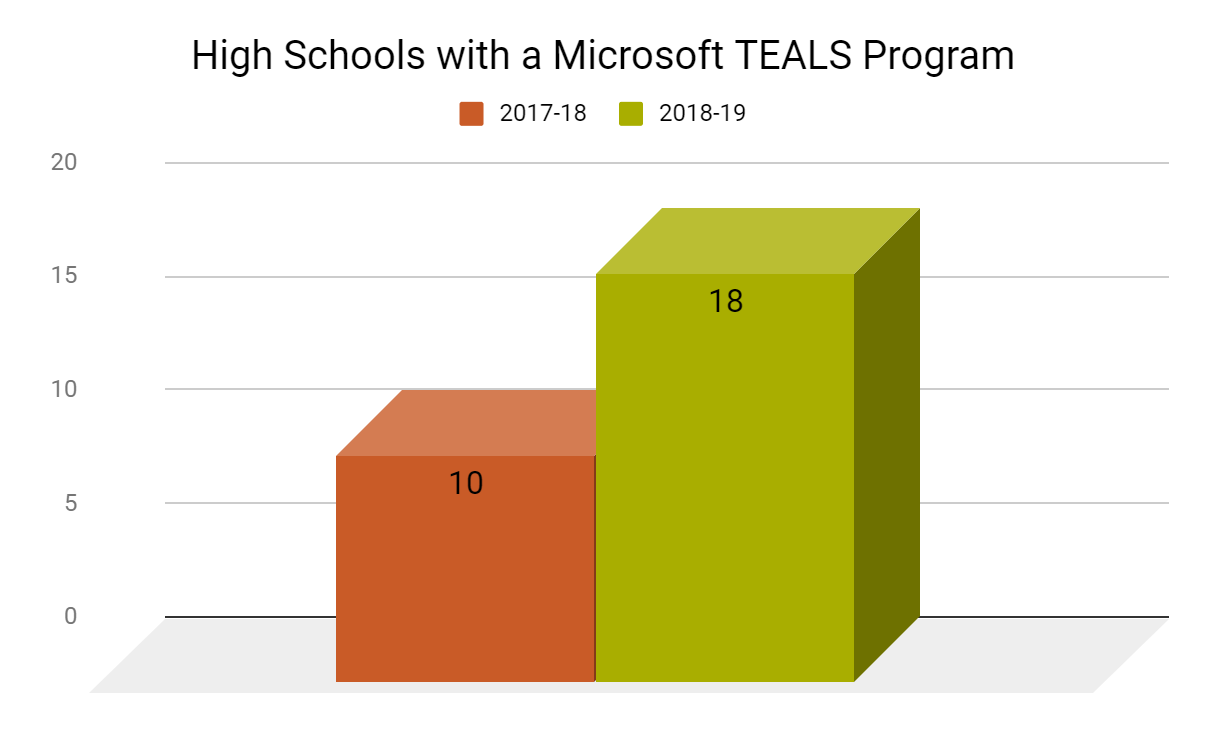 TEALS is a program started by Microsoft to help bring computer science into every high school in North America. This program came to the region in the Spring of 2017. In the 2017-2018 school year, across Northeast Wisconsin, 10 schools reported having a Microsoft TEALS program. This number increased to 18 schools reporting offering the TEALS program for the 2018-19 school year.
TEALS is a program started by Microsoft to help bring computer science into every high school in North America. This program came to the region in the Spring of 2017. In the 2017-2018 school year, across Northeast Wisconsin, 10 schools reported having a Microsoft TEALS program. This number increased to 18 schools reporting offering the TEALS program for the 2018-19 school year.
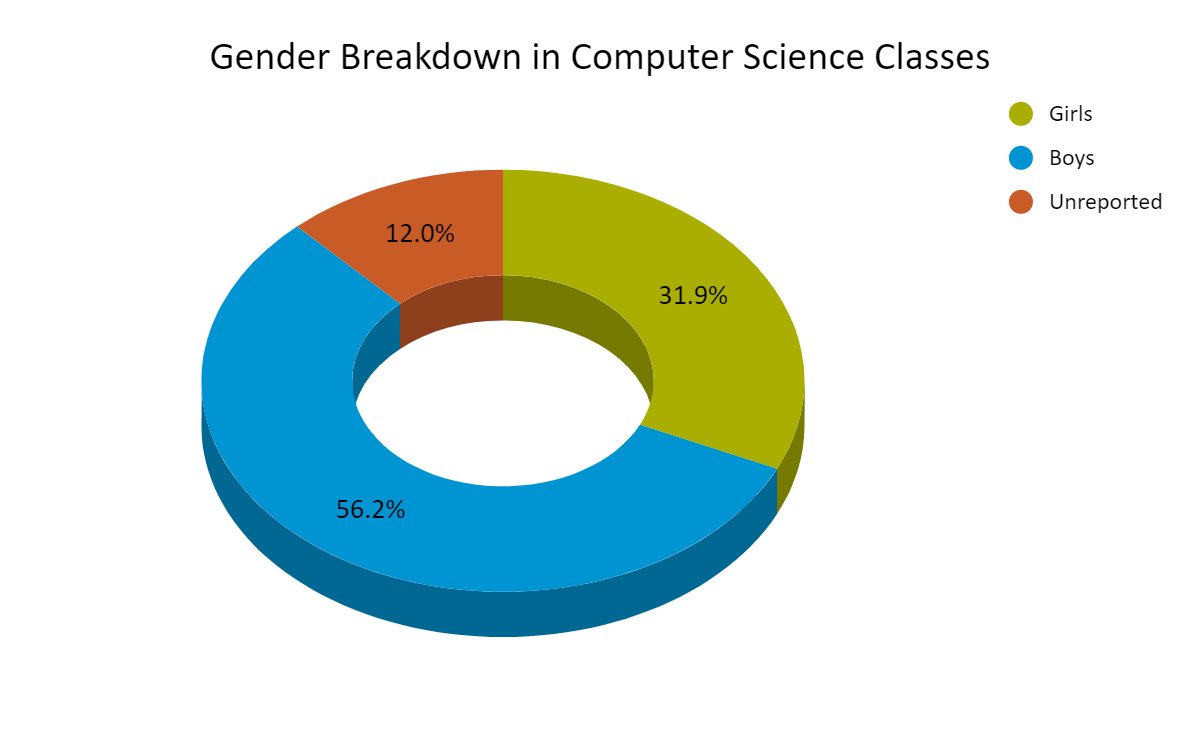
The data for the gender breakdown above comes from the survey conducted in 2018-2019. As the graph depicts, there is a predominantly male population in the computer science classes at the high school level with roughly 56% representation. Female representation comes in second at roughly 32% of the population in computer science classes. Data provided by Girls Who Code suggests this is on par with national averages for middle school and high school girls (https://girlswhocode.com/about-us/). The remaining 12% did not report gender on the survey.
College Data
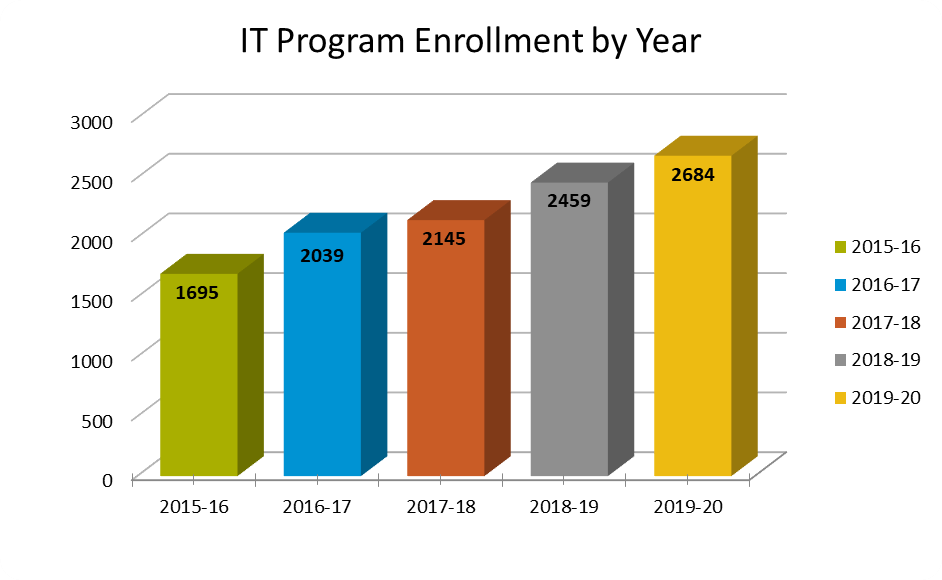
The NEW Digital Alliance collaborates with regional higher education institutions to collect annual data on the state of IT education in the region. Key data from UW Green Bay, UW Oshkosh, Lakeland University, FVTC, LTC, MPTC, and NWTC is provided below.
Reporting schools: UW Green Bay, UW Oshkosh, Lakeland University, FVTC, LTC, MPTC
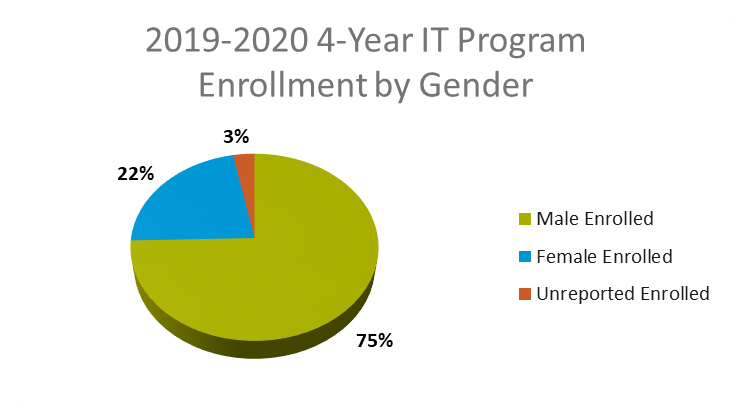
Female enrollment in college IT programs in Northeast Wisconsin aligns with national trends, sitting at roughly 18% of total IT program enrollment (https://www.ncwit.org/ncwit-fact-sheet). As women make up a growing segment of the college population, receiving roughly 60% of degrees granted in 2026, we will need to increase efforts to attract females into IT programs in order to maintain current enrollment levels in IT programs. While CDC birth rate data indicates that we will see a slight increase in college-age students over the next few years, peaking with students turning 18 in the year 2025, the curve will turn downward in 2026 and continue down for the next 13 years (https://www.cdc.gov/nchs/data/vsrr/vsrr-007-508.pdf). This trend will impact staffing for all careers, not just IT.
Reporting schools: UW Green Bay, UW Oshkosh, Lakeland University, FVTC, LTC, MPTC. Data available only for the 2018-19 academic year.
